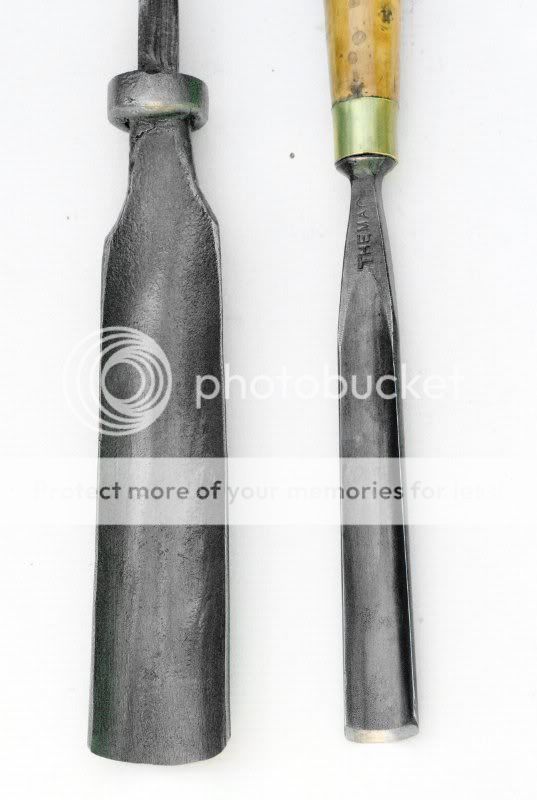Well, until someone who really knows what they're talking about stops by, I'll have a go.
The smaller of the two looks like a fairly standard Sheffield List carving gouge, though why it's sharpened in-cannel when most carving gouges are out-cannel or altered by their users to be double-cannel, I don't know. The light and delicate handle suggests carving gouge as well - it looks like a balanced and nimble tool. The blade looks a bit too thin to be a firmer gouge, and it's too short to be a paring gouge. I've never heard of 'THEMAwhatever', but that doesn't necessarily mean anything; there must have been hundreds of Sheffield makers over the years.
The 'Warranted Cast Steel' endorsement means it's pre-WW2. Crucible cast steel was last made during and just after the war. It was really superceded in the 1920s and '30s by the newer alloy tool steels (like the well-known 01), which tended to distort less on hardening, so needed less remedial grinding to clean them up. Production continued during the war to give a supply of tool steel whilst economising on the expensive and imported alloying elements like tungsten, molybdenum, vanadium and so on used in the newer alloy steels, but ceased very shortly after.
So how old? The style of the stamped mark suggests later rather than earlier - maybe post WW1.
The larger gouge is more of a puzzle. The bolster is not the usual octagonal Sheffield style, and the tang looks far thicker and chunkier than Sheffield ones tend to. I'm guessing here, but I'm going to plump for imported, maybe French, German or Swiss. Age? Not a clue....








